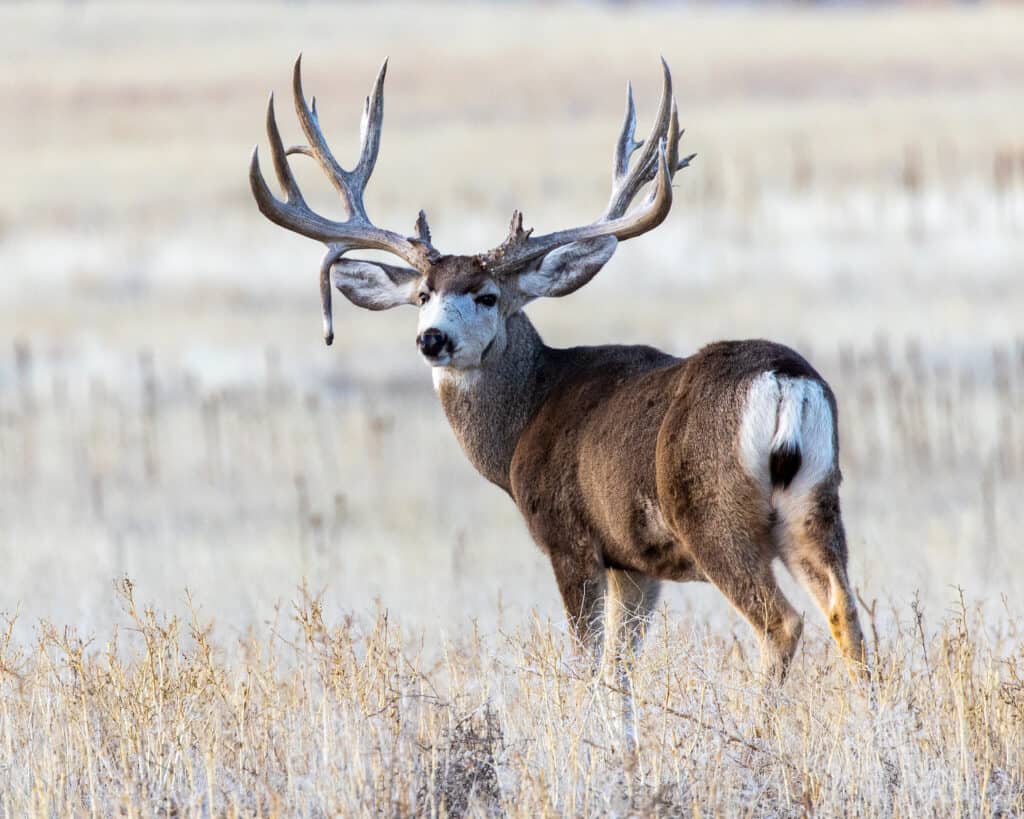
The post A Look at All the Animals That Call Canyonlands National Park Home appeared first on A-Z Animals.
Canyonlands National Park lies along the confluence of the Green and Colorado Rivers in southeast Utah and is one of the most desired national parks to visit. It’s split into four uniquely named districts: Island in the Sky, The Needles, The Maze, and Horseshoe Canyon. Choose from multiple activities, including river trips, backpacking, and incredible wildlife viewing.
In a typical year, about 800,000 people pass through this beloved park. If you’re planning a visit to Canyonlands, you might be curious which animals call this park home. Here’s a rundown of nearly every animal you could spot during your trip to Canyonlands National Park.
Mule Deer

©iStock.com/Jeff Edwards
Mule deer browse shrubs in Island in the Sky by day, before moving down into nearby canyons at night. You’ll often spot these ungulates near Grand View Point and along the main road at first light. Park-wide numbers likely sit in the low hundreds, though some seasons are better for spotting them than others.
Desert Bighorn Sheep
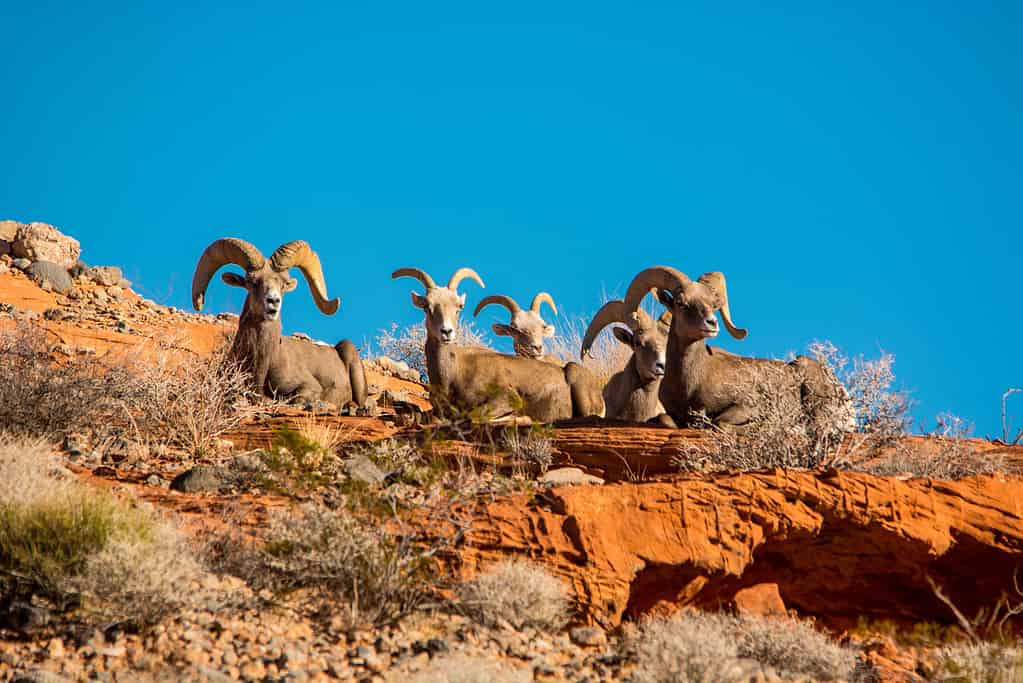
©Natures-Gallery/iStock via Getty Images
One of the most popular animals in the park, bighorn sheep are easily spotted during a visit to Canyonlands. Look for them on cliffs above the Green and Colorado Rivers, along the White Rim, and in The Needles near Big Spring and Salt Creek. The population within and immediately around the park likely totals 200 to 350 sheep; small bands of them can be seen during most months.
Coyote

©Wirestock/iStock via Getty Images
Coyotes cruise the mesa tops and follow washes in The Needles and Island in the Sky. Tracks are commonly found on sandy sections of the White Rim Road, so keep your eyes peeled. Dozens roam the park throughout the year, with sightings most common at dawn. Ideal if you’re camping!
Gray Fox
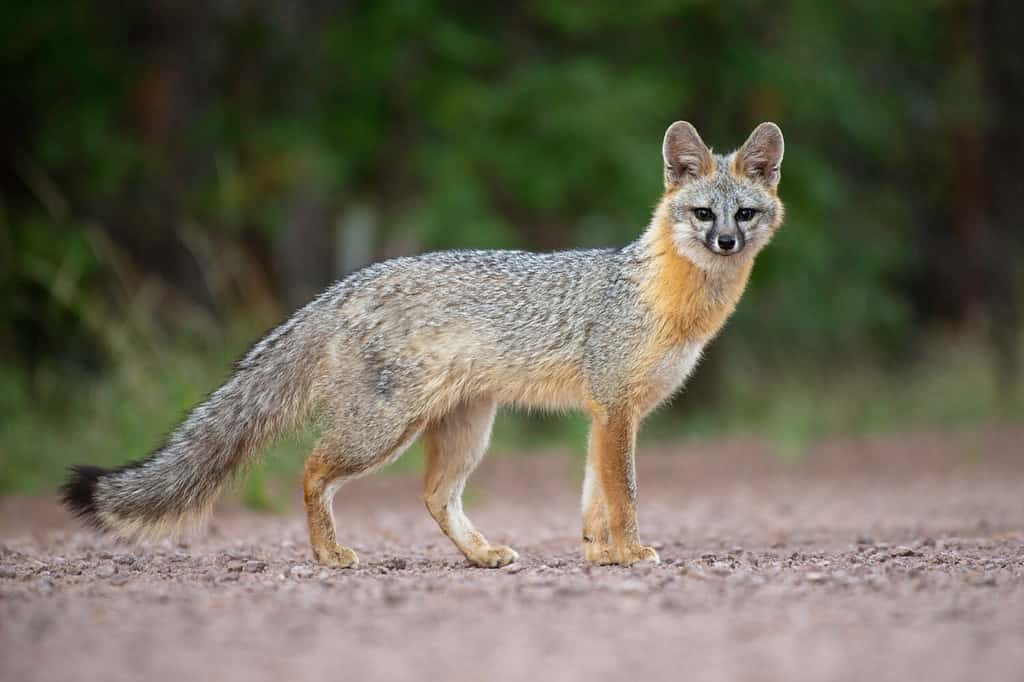
©Sean R. Stubben/Shutterstock.com
These small canids hide along canyon bottoms and forest edges, especially near water sources like Salt Creek. Like coyotes, they’re nocturnal, though far less conspicuous. Expect a few dozen across the park, though due to their elusive nature, sightings are only occasional. Perhaps you’ll get lucky.
Bobcat
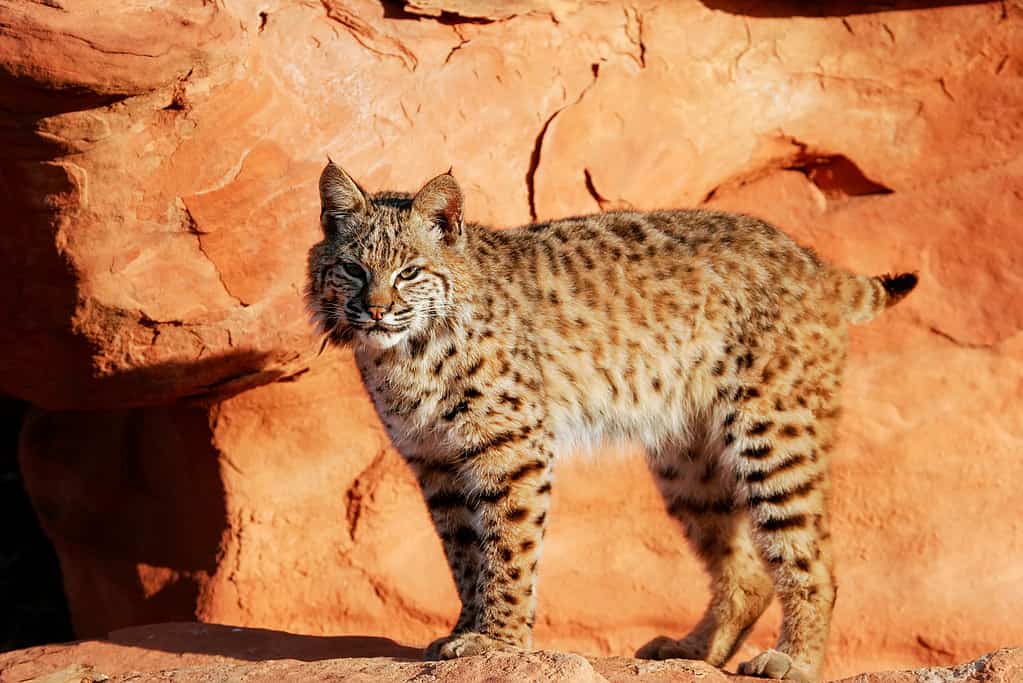
©Don Mammoser/Shutterstock.com
Bobcats can be found throughout the park, though these solitary, secretive cats prefer not to be spotted. A quick view at dusk along the Upheaval Dome Road or in lower Salt Creek is possible. The park likely holds just 10 to 20 resident cats.
Mountain Lion
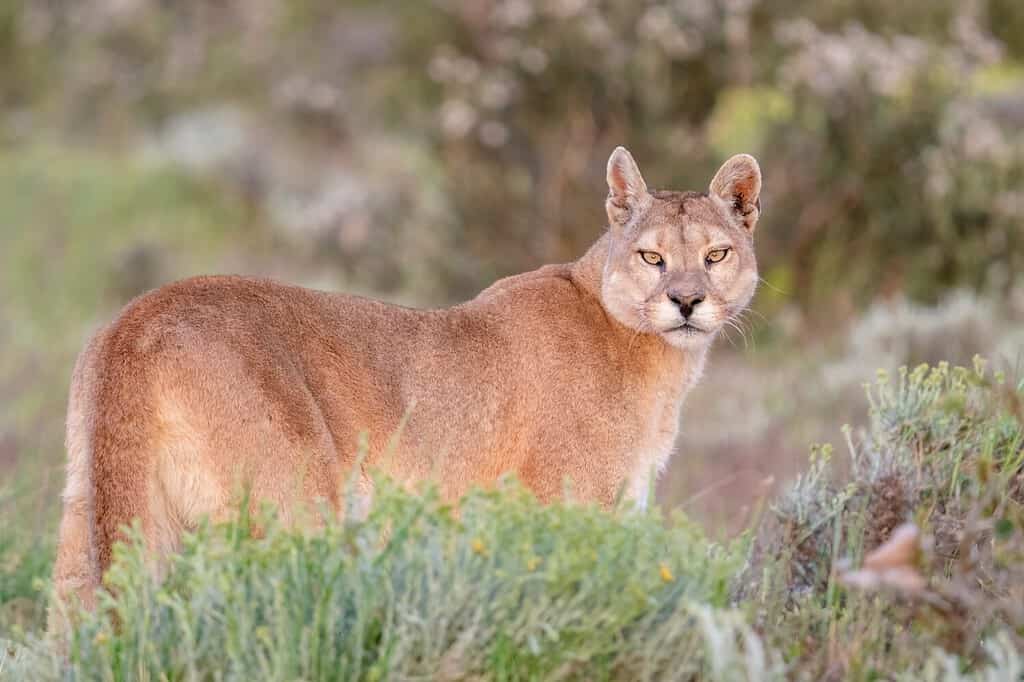
©Rob Jansen/Shutterstock.com
Cougars roam large territories of Canyonlands; like bobcats, they’re seldom seen. Tracks show up in side canyons of The Maze and along the White Rim, but it’s likely only a handful actually use park habitats at any given time.
American Badger
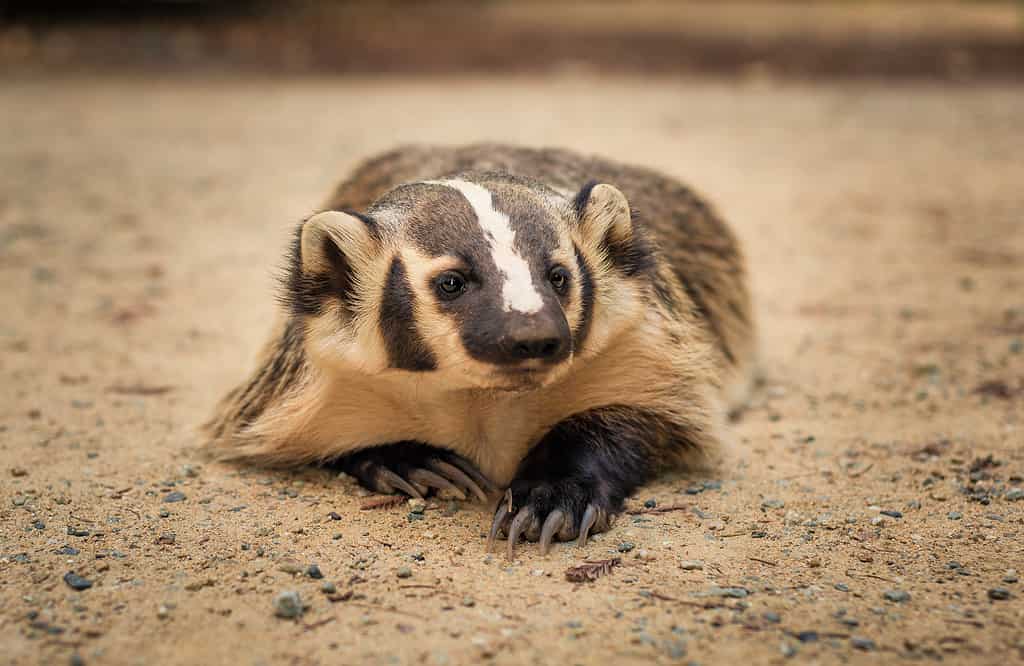
©Photography by Adri/ via Getty Images
Badgers love the open sage and grass patches of Island in the Sky and around Squaw Flat in The Needles. Fresh diggings appear near prairie-dog and ground-squirrel colonies, and roughly 5 to 15 are present park-wide.
Rock Squirrel

©Angel DiBilio/Shutterstock.com
Expect these hefty squirrels at picnic areas, trailheads, and rocky ledges, with Mesa Arch and Green River Overlook the most reliable spots. Several hundred likely occur across the districts and they’re among the easiest mammals to see. Just don’t feed these cute beggars, no matter how tempting!
Kangaroo Rat
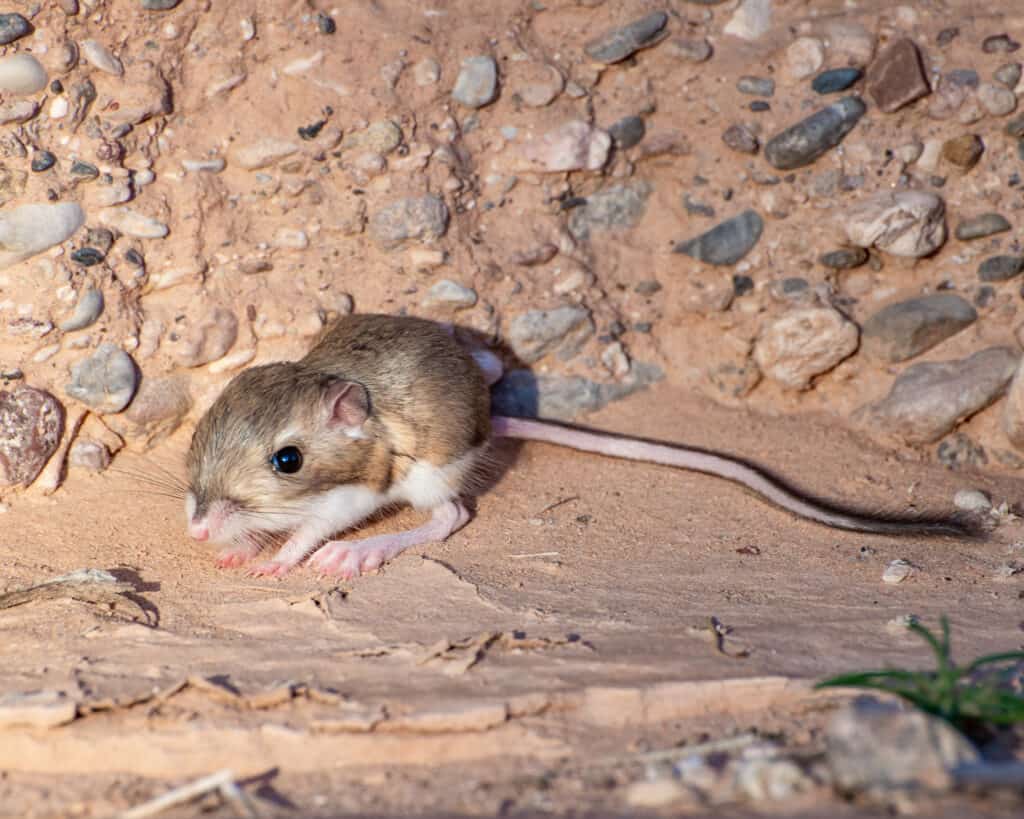
©Dominic Gentilcore PhD/Shutterstock.com
These elusive rats leave paired hind-foot tracks on sandy roads like White Rim and Elephant Hill approaches. After wildflower seasons, numbers can reach several thousand across open soils, though the animals themselves are rarely seen by day.
Bats (Pallid, Big Brown, Myotis, Free-Tailed)
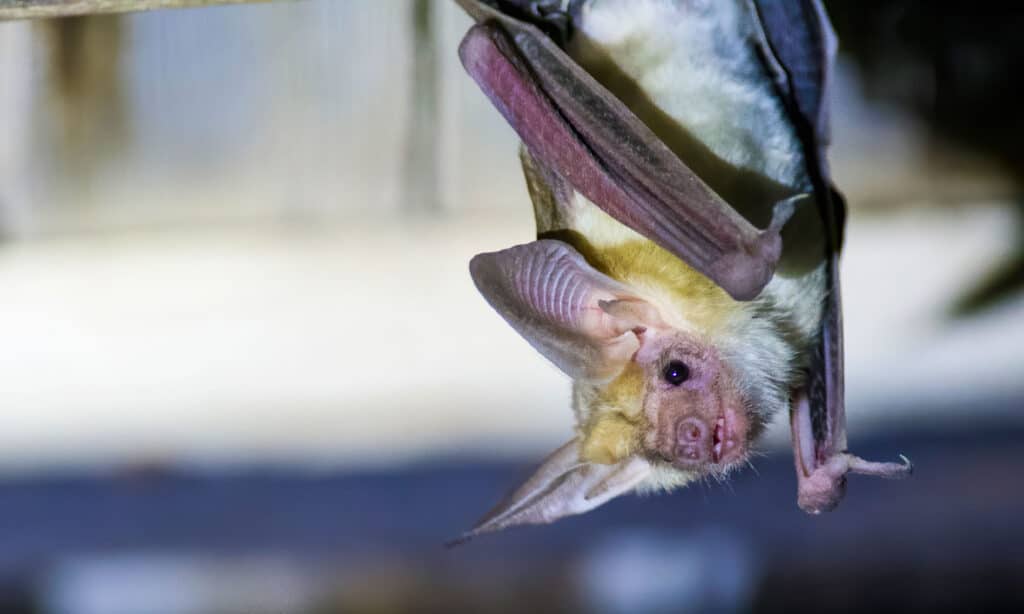
©Amanda Guercio/Shutterstock.com
Summer evenings bring multiple bat species to the Cottonwood-lined reaches of Salt Creek, along the Island in the Sky rim and above the campgrounds. On warm nights, a few hundred bats of mixed species may be in the air over popular areas. Watch them hunt while you stay warm by your campfire.
Common Raven
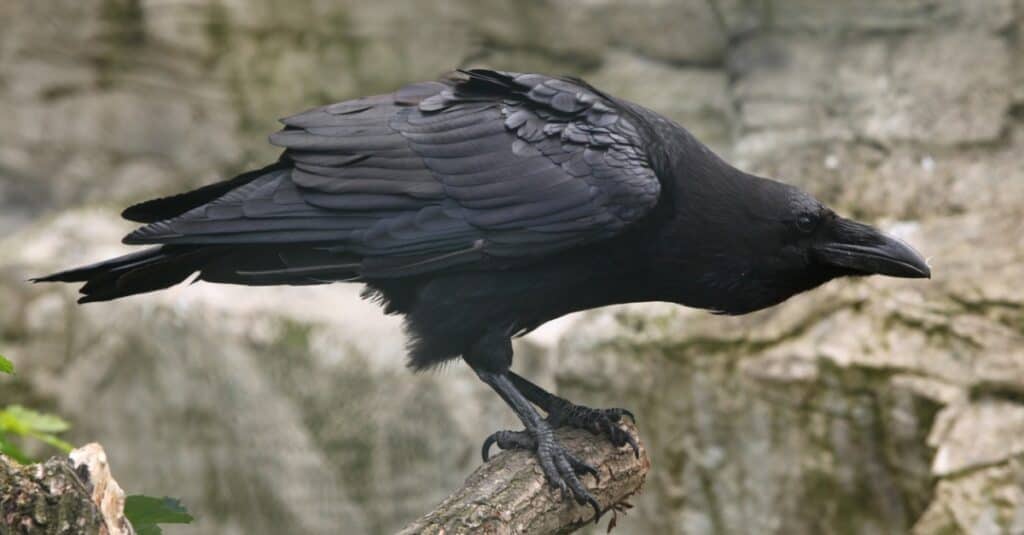
©iStock.com/wrangel
Ravens patrol every overlook and campground. They are most frequently spotted at Grand View Point, Shafer Canyon Viewpoint, and the Needles parking areas, searching for food. Dozens inhabit the park daily, likely 50 to 100 birds.
Peregrine Falcon

©DawnKey/iStock via Getty Images
The fastest bird in the world, peregrine falcons soar over Dead Horse Point area views right near the park and along the White Rim. A handful of pairs and floaters, often under a dozen birds, hang around the area. If you catch one hunting, you’ll likely be rewarded with quite a show.
Turkey Vulture

©Danny Ye/Shutterstock.com
Warm months bring turkey vultures to Island in the Sky and The Needles. Dozens circle above the park, though daily counts vary with weather and migration. You may also see them munching on carrion along the roadsides.
Swift
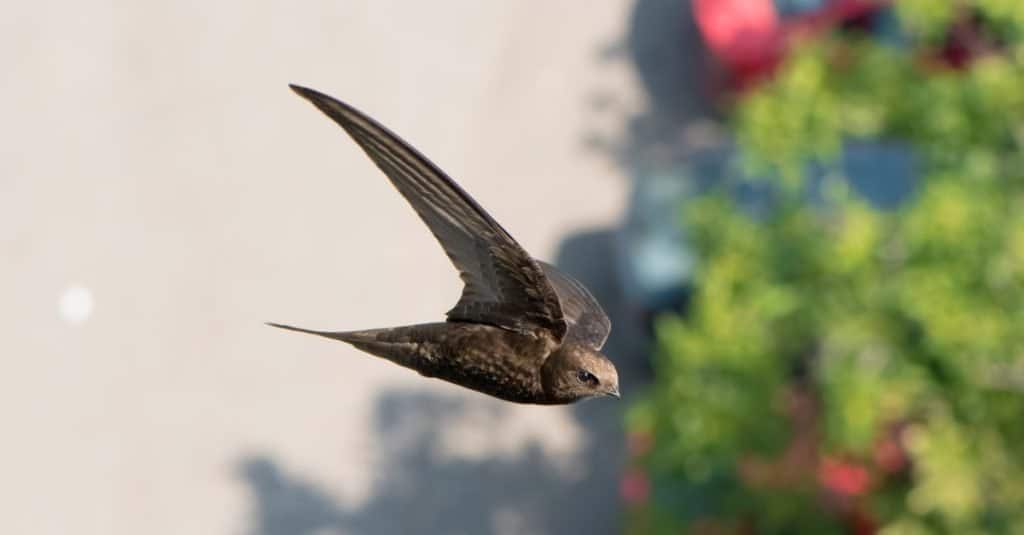
©Dilomski/Shutterstock.com
The walls around the Gooseberry and Shafer areas echo with swift calls in spring and summer months. Hundreds nest on cliffs and feed over the rims, and they’re a constant presence on calm, warm days. Listen to their calls and observe the unique way they structure their nests.
Great Blue Heron
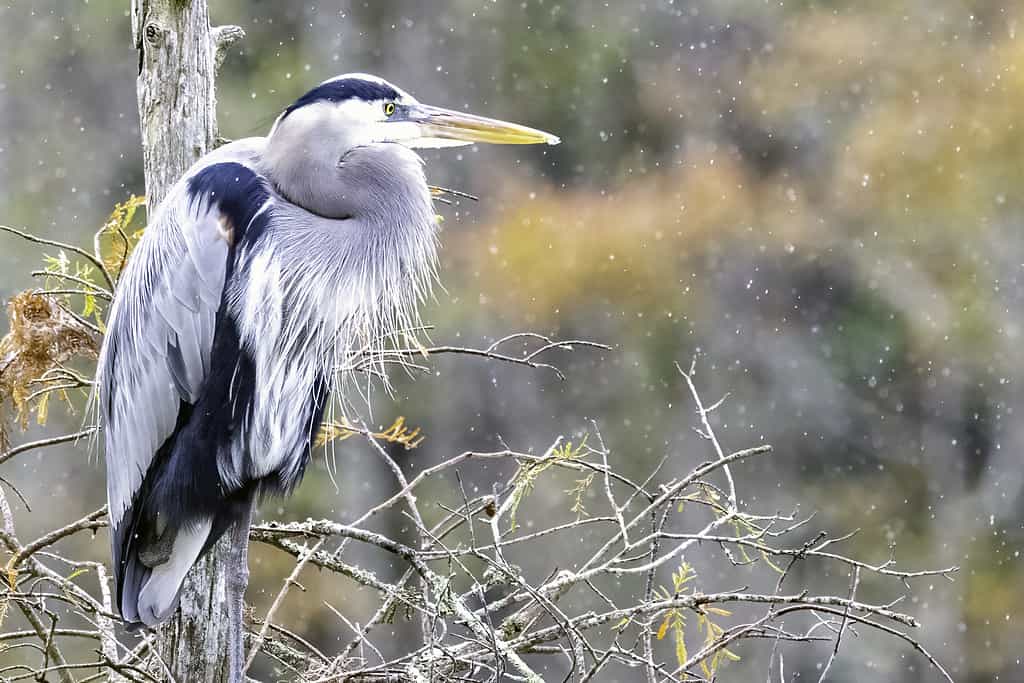
©dangarneau/iStock via Getty Images
Along calm portions of the Green and Colorado Rivers, herons stalk sandbars and backwaters. A small number, perhaps 10 to 30 individuals depending on season, use the park’s riparian zones. Their long legs and stern expressions shouldn’t be missed.
Beaver
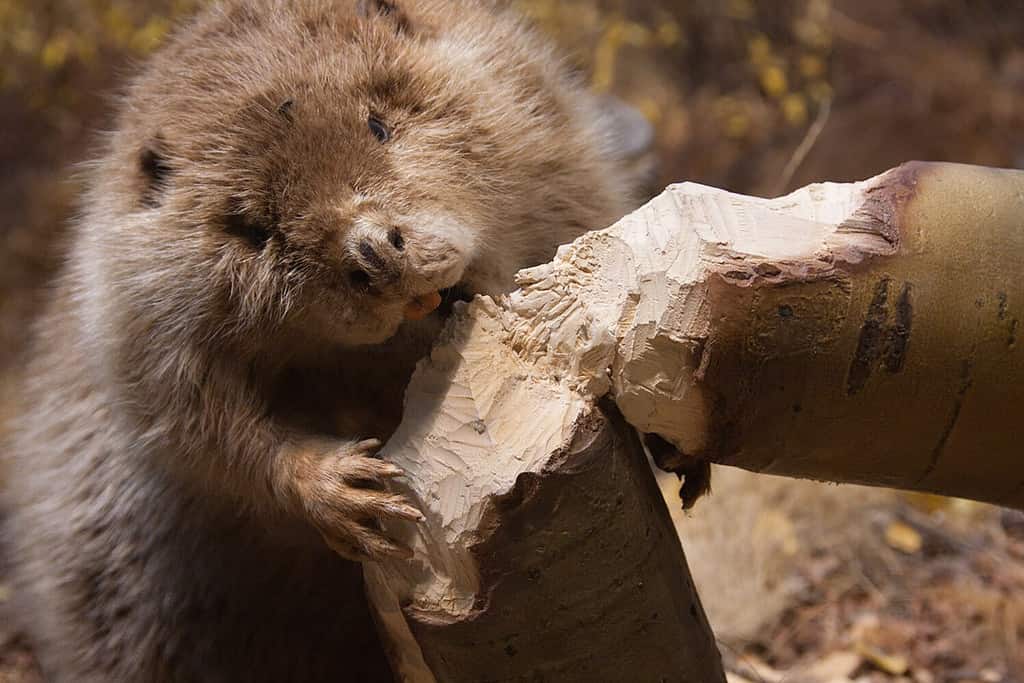
©Procy/Shutterstock.com
Cut stumps and twigs along slower side channels of the Green River and in vegetated stretches of Salt Creek means there is likely a family of beavers nearby. Only a few family groups occur, with likely fewer than 20 animals in park waters. However, you’ll notice they’re a fun addition to this desert landscape should you get the opportunity to spot one.
Collared Lizard

©RENA MICHAEL/Shutterstock.com
These bright, long-legged lizards bask on boulders beside trails like Slickrock in The Needles and near Whale Rock in Island in the Sky. Hundreds occupy the rocky hillsides of Canyonlands and they’re active on sunny mornings.
Desert Spiny Lizard

©Wirestock Creators/Shutterstock.com
These spiny lizards hide and dash along the rocks of Cave Spring and the ledges of cliffs on Island in the Sky. Likely 100 to 300 live in this prime rocky habitat, and they’re best seen mid-morning. Watch your step, as these little guys like to sun themselves along the trails.
Gopher Snake (Bullsnake)
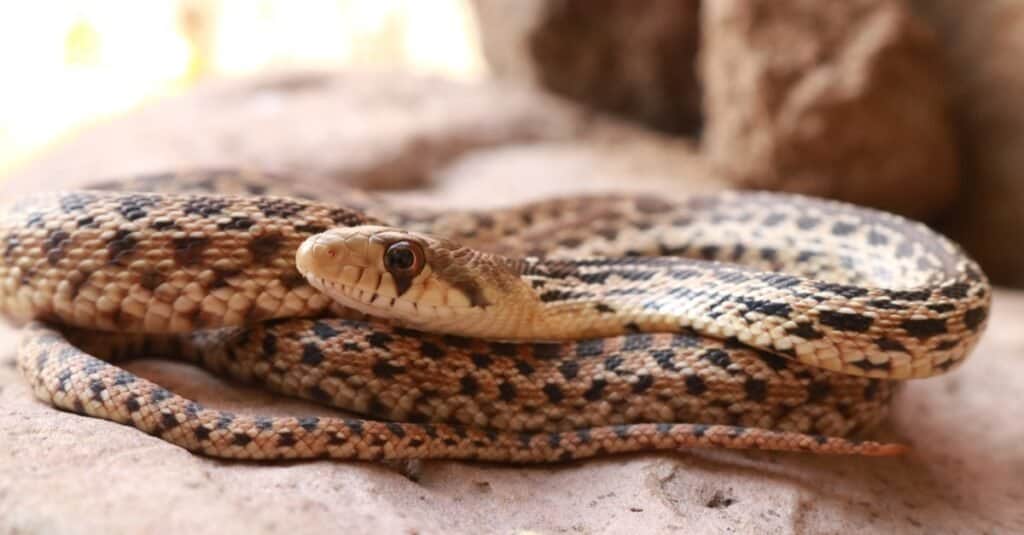
©Creeping Things/Shutterstock.com
This common, nonvenomous snake hides along sage flats and road margins. Its best seen in spring along the Island in the Sky Road and in The Needles near Squaw Flat. Dozens occur park-wide; roughly 50 to 150. If you encounter this snake, don’t be afraid; despite its resemblance to a rattle snake, it does not pose a risk. (However, rattlesnakes are also present in the park, so be careful of misidentification.)
Coachwhip
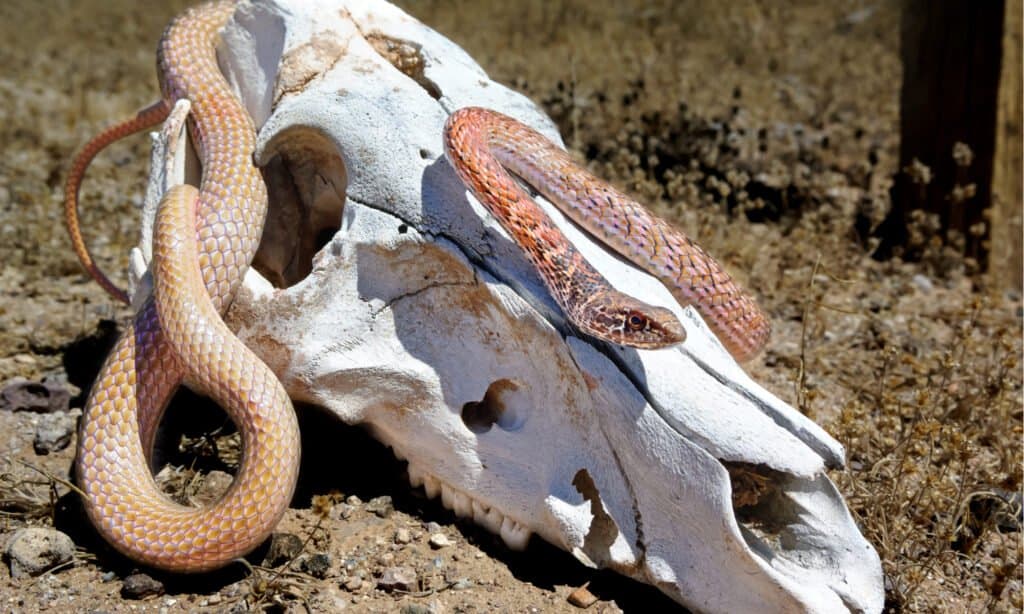
©Deep Desert Photography/Shutterstock.com
Long, fast, and diurnal, coachwhips cross open areas near trailheads like Grand View and along access roads to The Needles. A few dozen slither through the park each season, and sightings are quick, much like their name suggests.
Western Rattlesnake
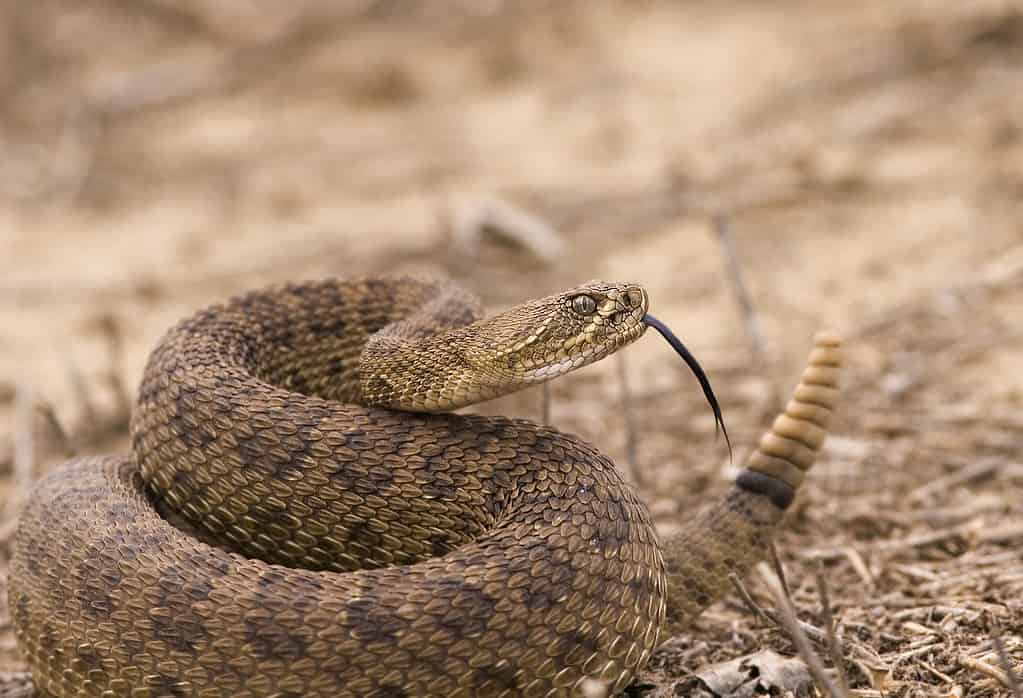
©Steve Mcsweeny/iStock via Getty Images
These notoriously venomous pit vipers prefer rocky slopes, ledges, and warm canyon margins. Encounters happen along the White Rim and sun-exposed talus in The Needles, with bites reported annually by park rangers. These snake numbers likely total 50 to 100. Always give rattlesnakes space, no matter how captivating they may be.
Red-Spotted Toad
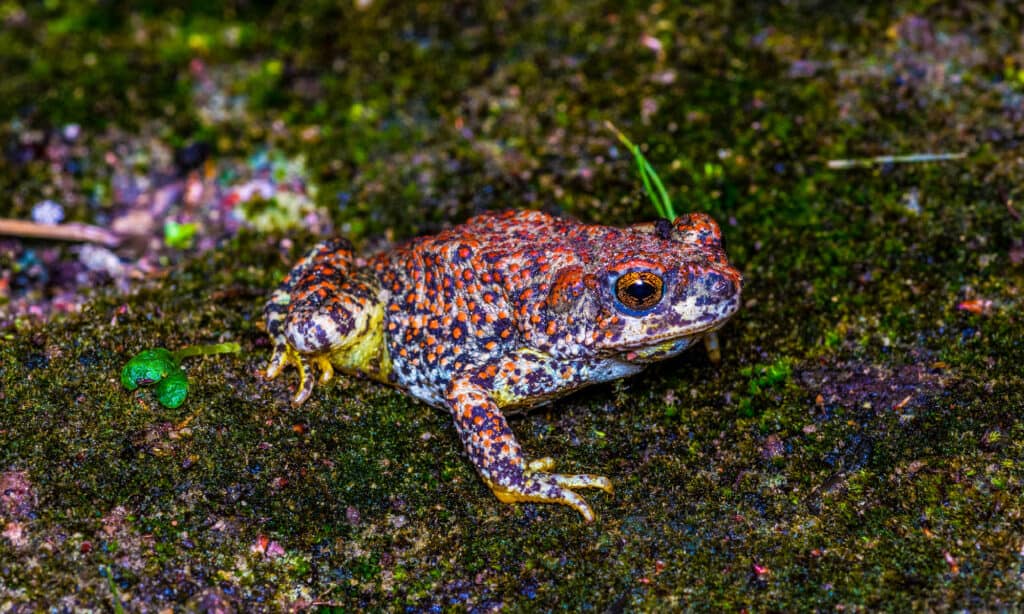
©iStock.com/Timothy Cota
After summer storms, these unique toads gather at the shallow pools of Salt Creek and even in potholes near Island in the Sky. Dozens can appear briefly, then vanish underground for long dry spells. Count yourself lucky if you spot one of these colorful amphibians.
Canyon Treefrog
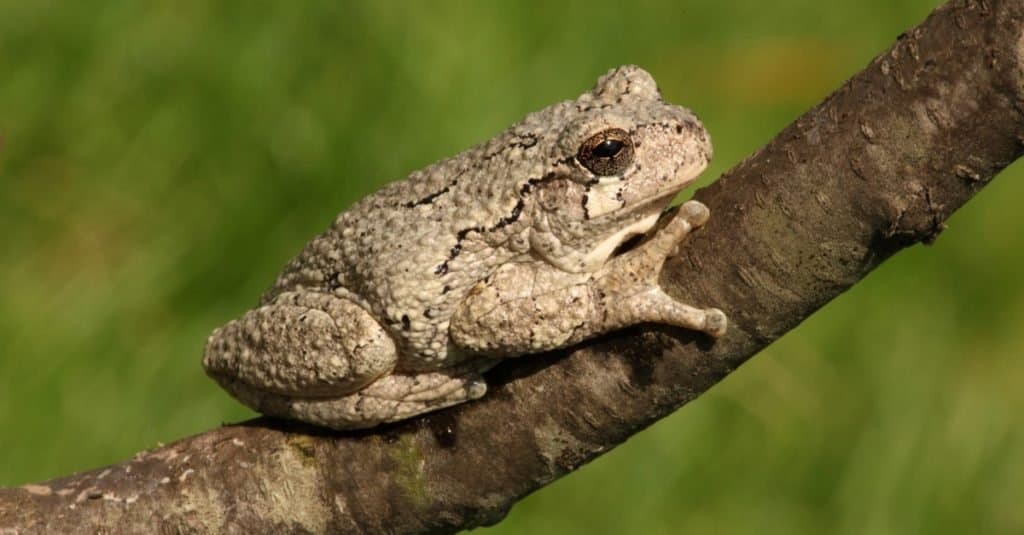
©Steve Byland/Shutterstock.com
Rocky seeps and pools, especially along the White Rim near creeks and in shaded alcoves in The Needles, host these adorable frogs. Numbers vary with annual water levels, but seasonal choruses involve scores of frogs in wet years. If you camp, you’ll likely hear them ribbit.
Tiger Salamander
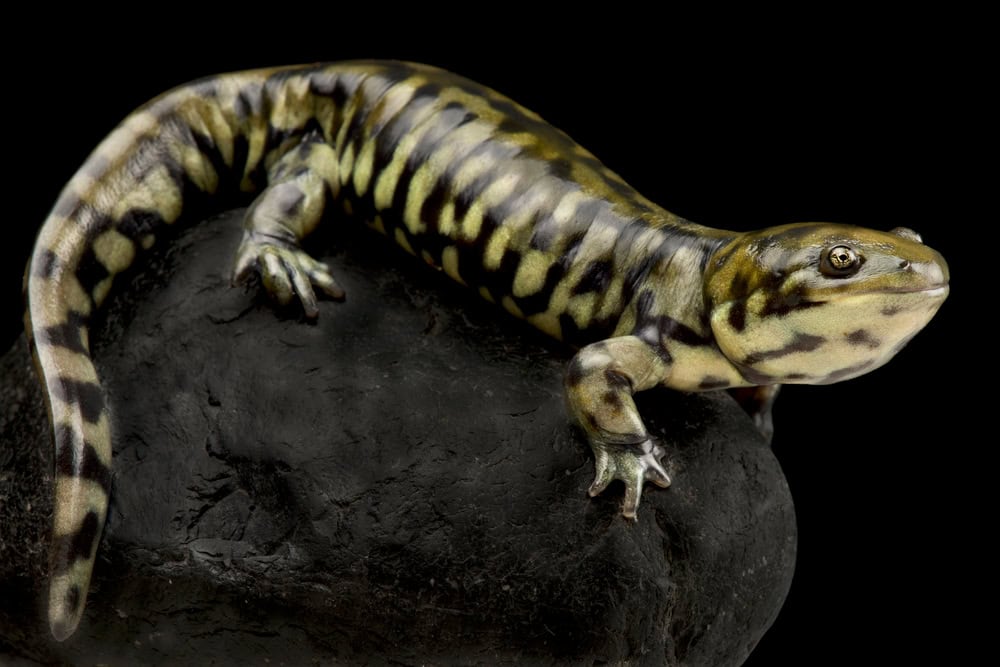
©reptiles4all/Shutterstock.com
Found near stock ponds and spring-fed pools in the broader park area, encounters with tiger salamanders are uncommon. However, they are likely present in low, localized numbers where permanent water persists.
Tarantula
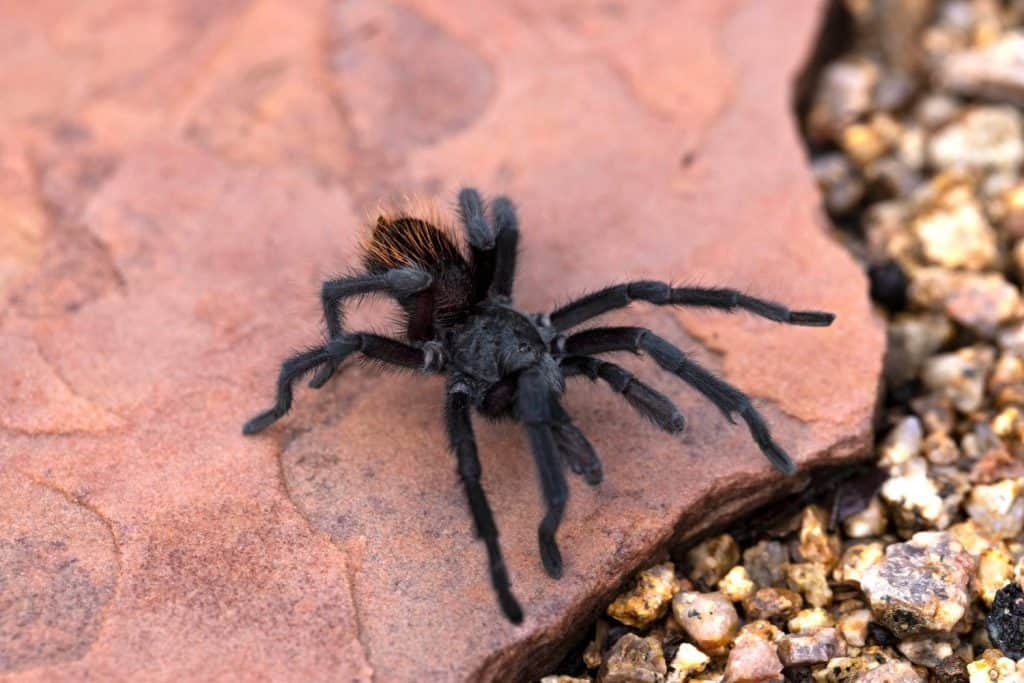
©Malisa Nicolau/Shutterstock.com
Tarantulas wander park roads and the Squaw Flat loops, though most often during the night. There are hundreds across suitable soils, and searching for these black spiders at dusk may result in a sighting. No need to be scared; just don’t handle these hairy spiders.
Bark Scorpion
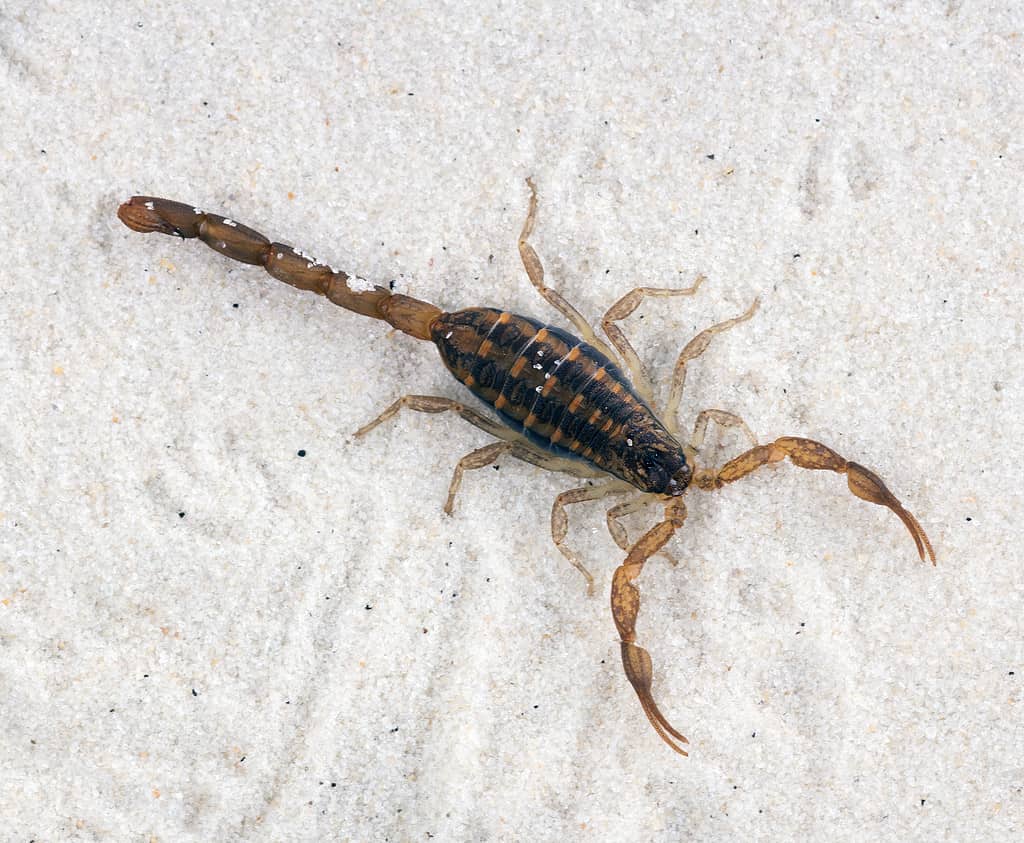
©IrinaK/Shutterstock.com
Scorpions hide amongst rock piles and campground edges, so be alert if you’re camping in Canyonlands. While common, bark scorpions are seldom seen without a UV light. However, numbers likely reach the hundreds park-wide, so keep an eye out, especially if you’re packing up the soft goods around your campsite.
The post A Look at All the Animals That Call Canyonlands National Park Home appeared first on A-Z Animals.
October 11, 2025 at 07:02PMAugust Croft
.jpeg)
.jpeg)

0 Comments